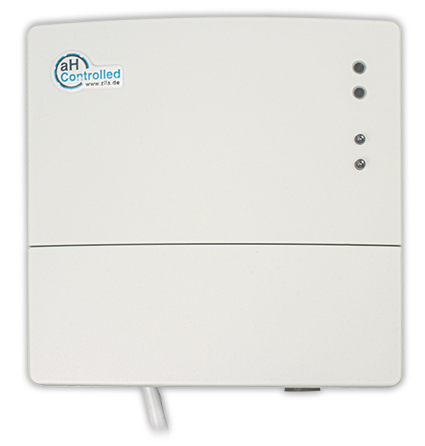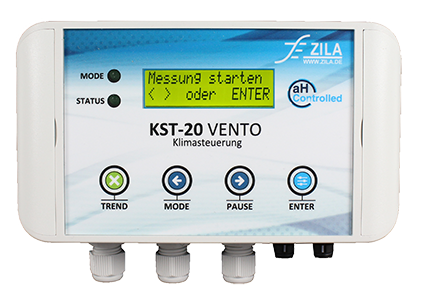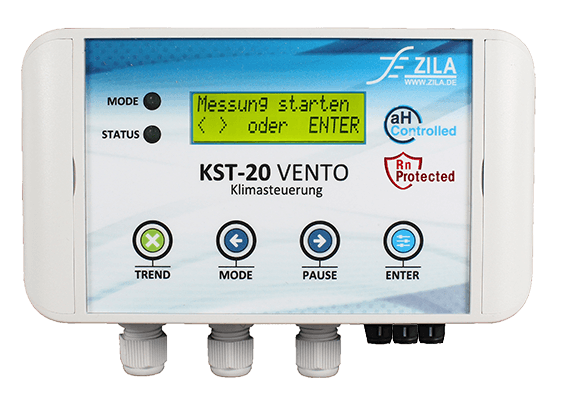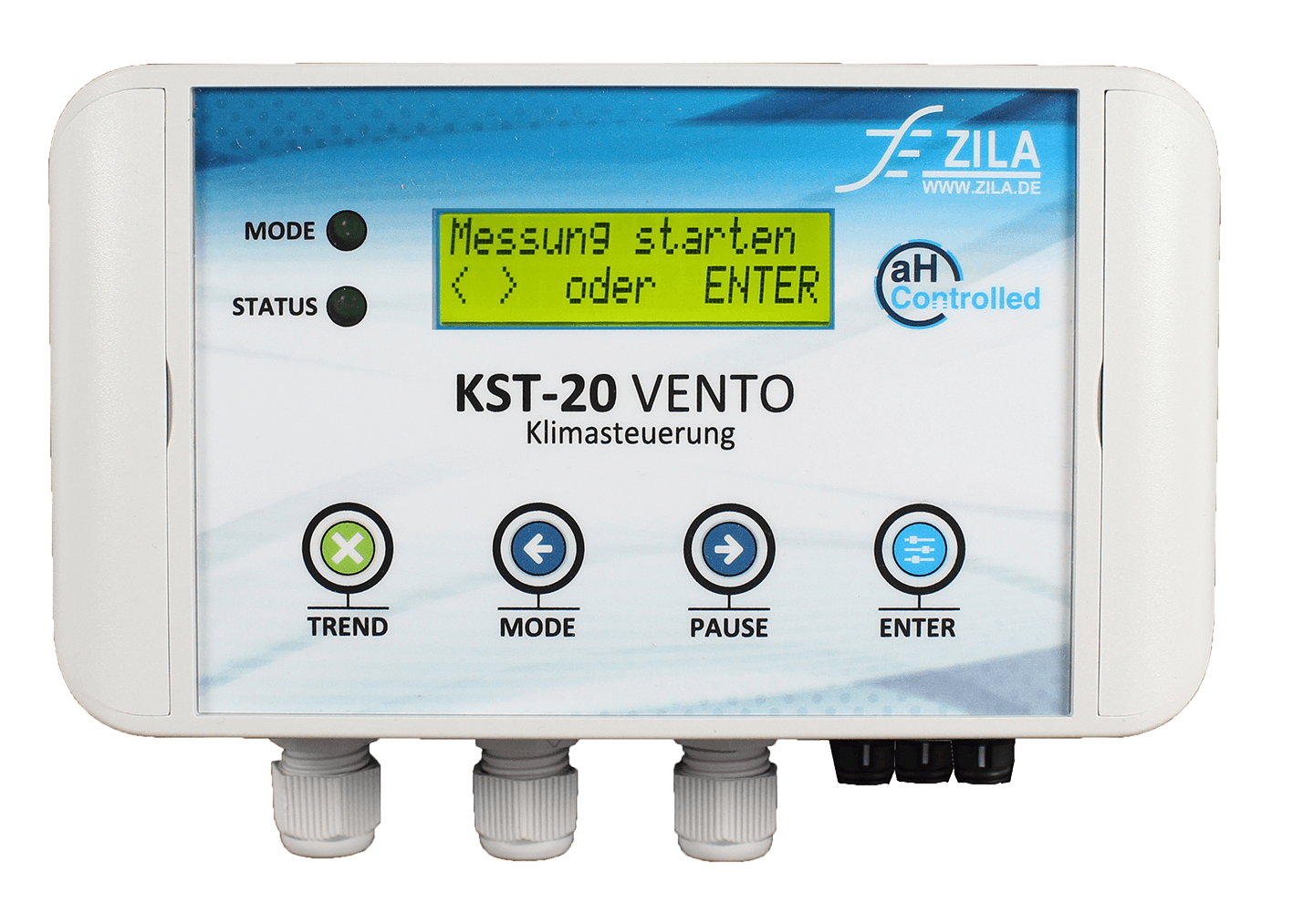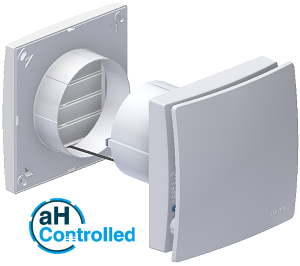
- Written by ZILA GmbH
Dehumidification on the basis of the absolute humidity: ZILA's aH experience
Increased humidity levels indoors can have several causes, but often the occupants' ventilation behaviour plays a major role. If high humidity values have been recorded over a period of several days, it is possible to draw specific conclusions about the ventilation behaviour of the people in the room, building or cellar concerned. The condition of the building fabric and the location of a house (e.g. in flood areas) are also decisive factors for whether and how much humidity can enter the room.
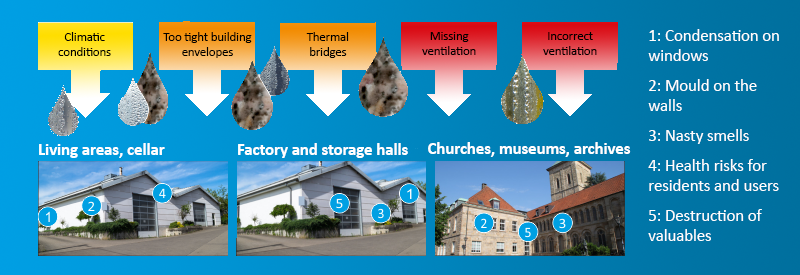
It is well-known that poor and incorrect ventilation lead to moist walls in cellars and basements, and consequently, if nothing changes, to mould. While with poor ventilation, the moist air cannot be removed from the room concerned, incorrect ventilation leads to another problem. In this case, the exact opposite result is achieved - the humidity level of the room inceases even more, if the outdoor air contains more moisture than the indoor air. In this way, moisture starts to accumulate in the room and settle on the walls, which, in the end, causes mould on the walls. However, many ventilation solutions on the market simply use timed dehumidification methods without the absolute humidity approach.
ZILA offers you innovative devices for
- needs-based,
- user-independent and
- energy-efficient room dehumidification.
Climate controls for dehumidification and mould prevention
The fundamental principle of ZILA's climate controls is based on the energy-efficient absolute humidity approach. This means, by simply ventilating the room concerned physically correct, an optimum energy balance can be maintained at the same time. With this approach, humidity is removed from inside in a controlled and fully automatic way, so that the rooms of a building can dry off, keep a constant climate and achieve an optimum temperature-humidity ratio.
For this purpose, a climate and dehumidification control triggers fans or motor-driven window openers, whilst climate sensors record the climatic conditions indoors and outdoors.

Dehumidification with ZILA's aH experience
For dehumidification of rooms, ZILA uses the approach of comparing the absolute humidity indoors and outdoors. First of all, the measurands temperature and relative humidity are determined with the help of climate sensors (combined temperature and humidity sensors). Since these sensors are integrated into an intelligent climate and dehumidification control, the absolute humidity (aH) can be measured as a reference variable.
With the measured values for humidity and temperature, the device then calculates the following physical parameters for dehumidification:
- Absolute humidity and enthalpy outdoors
- Absolute humidity and enthalpy indoors (in the room to be dehumidified)
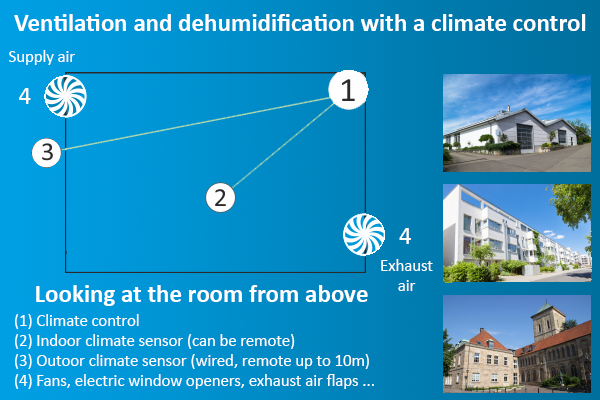
If the absolute humidity (aH) outdoors is lower than what is measured in the cellar or room to be dehumidified, a fully automated ventilation process is started to remove the moist room air. The comparison of the absolute humidity indoors and outdoors prevents more moist air from flowing back into the room when the outdoor climate is humid. Since this method also considers the temperature, ventilation processes are largely carried out without heat loss and in an energy-efficient way, according to the absolute humidity approach.

Devices for ventilation, dehumidification and cooling
| Product | Description | Details |
|
KST-20 Calima
|
The KST-20 Calima is a climate control with aH-Controlled technology for ventilation, dehumidification and cooling for all kinds of private, commercial and industrial rooms. With its operating modes for living space ventilation and room dehumidification, the climate control KST-20 Calima can be implemented flexibly in almost any residential, work and industrial area. | Climate control KST-20 Calima |
|
KST-20 Vento
|
The KST-20 Vento is a climate control with aH-Controlled technology for ventilation, dehumidification and cooling for all kinds of private, commercial and industrial rooms. With its three operating modes for ventilation, dehumidification and cooling, the climate control KST-20 Vento can be implemented flexibly in almost any residential, work and industrial area. | KST-20 Vento - Ventilation, dehumidification, cooling |
|
KST-20 Vento/RN
|
The KST-20 Vento/RN is a climate control with aH-Controlled technology and RN-Protected label for ventilation and dehumidification for any private, commercial and industrial rooms. With its three operating modes (ventilation, dehumidification and radon measurement), the KST-20 Vento can be used flexibly in almost any kind of living, working and industrial environment. |
KST-20 Vento with radon ventilation |
|
KST-20 Vento/CO2
|
The KST-20 Vento/CO2 is a climate control with aH-Controlled technology for ventilation and dehumidification of any private, commercial and industrial premises. With its three operating modes (ventilation, dehumidification and CO2 measurement) the climate control KST-20 Vento can be flexibly used in almost every living, working and industrial area. | KST-20 Vento with air quality monitoring function |
|
Aero_aH 100
|
The Aero_aH 100 is an exhaust air fan for small spaces up to 25m² (~90m³) and provides for automatic, user-independent and climate controlled dehumidification. The device comes with an integrated dehumidification control as well as an indoor and outdoor climate sensor. Controlled dehumidification is achieved by comparing the indoor and outdoor climate. To support and enhance dehumidification, additionally, users can directly connect and control a supply air fan with the Aero_aH 100. | Automatic room dehumidification with our exhaust fan Aero_aH 100 |
Summary
- Many ventilation solutions do not work on the approach of comparing the absolute humidity; using other than this approach, however, leads to worse or opposite results.
- ZILA's aH experience describes energy-efficient dehumidification by comparing the absolute humidity indoors and outdoors using a climate control and climate sensors.
- A fully automated and controlled ventilation process is only started when the absolute humidity outside is lower than inside (aH outside < aH inside).
- ZILA's climate controls for dehumidification work user-independently.
- After dehumidification of a cellar, basement or room, an optimum indoor climate will be maintained.
- The devices are able to control supply and exhaust air fans or motor-driven window openers.
- The climate control can also be equipped with CO2 sensors.
More information and links
Site map: Ventilation and climate controls
Blog: Dehumidification technology aH-Controlled briefly explained
Blog: Dehumidification and ventilation of existing and listed buildings
Blog: The influence of CO2 on the air quality and our daily lives
Blog: Radon: Health risks and limit values

